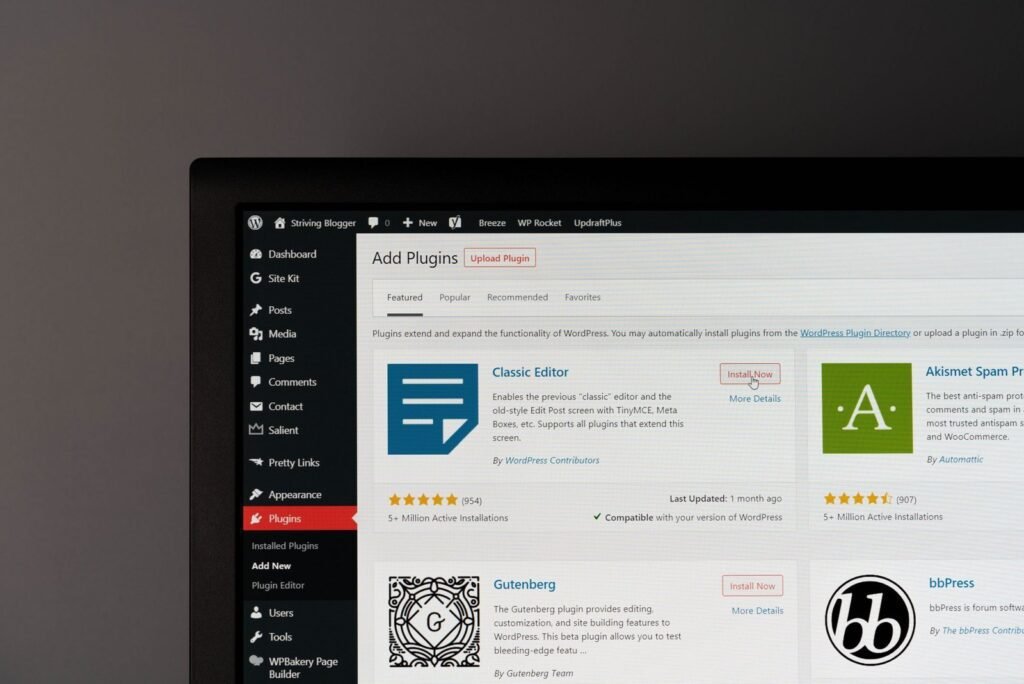WordPress Website Maintenance
What is WordPress Maintenance ?
WordPress website maintenance involves regular updates, backups, and optimizations to ensure your site runs smoothly and securely. It’s essential to keep your website in top shape to provide a seamless user experience and protect your business’s online presence.

Why is WordPress Website Maintenance Important ?
Security: Regular maintenance helps protect your website from security threats. By keeping WordPress core, themes, and plugins updated, you reduce the risk of vulnerabilities that hackers can exploit.
Performance: A well-maintained website performs better. Regular optimizations ensure your site loads quickly, providing a better user experience and improving your search engine rankings.
User Experience: Regular updates and maintenance ensure that your website functions correctly, providing a smooth and enjoyable experience for your visitors. This can lead to higher engagement and conversion rates.
SEO: Search engines favor websites that are regularly updated and well-maintained. Regular maintenance helps improve your site’s SEO, making it easier for potential customers to find you online.
Backup and Recovery: Regular backups are crucial for protecting your data. In case of a website crash or data loss, having a recent backup ensures you can quickly restore your site with minimal downtime.
Key Aspects of WordPress Website Maintenance
Regular Updates: Keep WordPress core, themes, and plugins updated to ensure compatibility and security. Regular updates help protect your site from vulnerabilities and improve functionality.
Backups: Schedule regular backups of your website to ensure you can recover your data in case of an emergency. Use reliable backup solutions and store backups in multiple locations.
Security Monitoring: Implement security measures such as firewalls, malware scans, and strong passwords. Regularly monitor your site for suspicious activity and address any security issues promptly.
Performance Optimization: Optimize your website’s performance by regularly cleaning up your database, compressing images, and using caching solutions. This helps improve loading times and provides a better user experience.
Content Updates: Regularly update your website’s content to keep it fresh and relevant. This not only improves user engagement but also helps with SEO.
How to Maintain Your WordPress Website : Step by Step
Create a Maintenance Schedule: Establish a regular maintenance schedule to ensure all tasks are completed consistently. This can include weekly, monthly, and quarterly tasks.
Use Maintenance Plugins: Utilize WordPress maintenance plugins to automate tasks such as updates, backups, and security scans. This can save time and ensure your site is always up to date.
Monitor Performance: Regularly check your website’s performance using tools like Google PageSpeed Insights. Address any issues that may be affecting your site’s speed and user experience.
Review Security Logs: Regularly review your website’s security logs to identify and address any potential threats. Implement additional security measures as needed.
Test Functionality: Periodically test your website’s functionality to ensure all features are working correctly. This includes checking forms, links, and interactive elements.
Troubleshooting Common Issues
Update Conflicts: Sometimes updates can cause conflicts between plugins or themes. If this happens, try deactivating plugins one by one to identify the issue, or restore your site from a backup.
Slow Performance: If your site is running slowly, check for large images, excessive plugins, or a cluttered database. Optimize these elements to improve performance.
Security Breaches: If your site is compromised, take immediate action by restoring from a backup, changing passwords, and implementing additional security measures.
Conclusion
Regular WordPress website maintenance is crucial for small businesses to ensure their site remains secure, performs well, and provides a great user experience. By staying proactive with updates, backups, and optimizations, you can protect your online presence and support your business’s growth. Remember to establish a maintenance schedule, use reliable tools, and consult with professionals if needed. Happy maintaining!